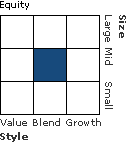| Janus Henderson VIT Mid Cap Value Instl |
|
 |
|
| Release date as of 2025-08-31. Data on page is subject to change. |
|
|
Overall Morningstar
Rating™
|
| What is this?
|
|
 |
| As of 2025-08-31 |
|
Out of 378
Mid-Cap Value Funds
|
|
|
|
|
|
| Total Fund Assets ($ Mil) |
| 116.38 |
|
|
|
| Investment Objective & Strategy |
|
| The investment seeks capital appreciation.
|
|
| The Portfolio pursues its investment objective by investing primarily in the common stocks of mid-sized companies and focuses on companies whose stock prices are believed to be undervalued by portfolio management or that have fallen out of favor with the market. The Portfolio may invest up to 20% of its net assets in securities of companies having market capitalizations outside of the aforementioned market capitalization ranges. |
|
|
| Morningstar Category: Mid-Cap Value |
|
| Some mid-cap value portfolios focus on medium-size companies while others land here because they own a mix of small-, mid-, and large-cap stocks. All look for U.S. stocks that are less expensive or growing more slowly than the market. Stocks in the middle 20% of the capitalization of the U.S. equity market are defined as mid-cap. Value is defined based on low valuations (low price ratios and high dividend yields) and slow growth (low growth rates for earnings, sales, book value, and cash flow).
|
|
|
| Mid Cap Funds: The securities of companies with market capitalizations below $10 billion may be more volatile and less liquid than the securities of larger companies. |
|
|
| % of Net Assets |
 |
U.S. Stocks |
93.3 |
 |
Non-U.S. Stocks |
3.8 |
 |
Bonds |
0.0 |
 |
Cash |
3.0 |
 |
Other |
0.0 |
|
|
 |
| Data through 2025-06-30 |
|
|
|
|
| Morningstar Equity Sectors |
|
|
|
% of Stocks |
 |
Cyclical |
48.83 |
 |
Basic Materials |
6.09 |
 |
Consumer Cyclical |
14.39 |
 |
Financial Services |
20.77 |
 |
Real Estate |
7.58 |
|
|
|
 |
Sensitive |
37.20 |
 |
Communication Services |
2.41 |
 |
Energy |
5.71 |
 |
Industrials |
19.34 |
 |
Technology |
9.74 |
|
|
|
 |
Defensive |
13.97 |
 |
Consumer Defensive |
2.78 |
 |
Healthcare |
6.14 |
 |
Utilities |
5.05 |
|
| Data through 2025-06-30 |
|
|
| Total Number of Stock Holdings |
73 |
| Total Number of Bond Holdings |
0 |
| % of Net Assets in Top 10 Holdings |
22.70 |
|
|
| Turnover % |
(as of 2024-12-31) |
42.00 |
| 30 Day SEC Yield % |
0.00 |
|
|
Sector |
P/E |
% of Net
Assets
|
 |
 |
 |
 |
 |
 |
Casey's General Stores Inc |
 |
35.55 |
2.83 |
|
Expand Energy Corp Ordinary Shares - New |
 |
--- |
2.46 |
 |
Alliant Energy Corp |
 |
20.02 |
2.45 |
 |
Freeport-McMoRan Inc |
 |
33.88 |
2.44 |
 |
Agree Realty Corp |
 |
--- |
2.18 |
 |
|
BWX Technologies Inc |
 |
52.44 |
2.18 |
|
The Hartford Insurance Group Inc |
 |
12.03 |
2.16 |
 |
Ally Financial Inc |
 |
56.29 |
2.00 |
|
TransUnion |
 |
45.86 |
2.00 |
 |
Everest Group Ltd |
 |
18.28 |
2.00 |
 |
|
 |
|
|
|
|
|
| Foreign Securities, Long-Term Outlook and Projections, Loss of Money, Not FDIC Insured, Value Investing, Active Management, Market/Market Volatility, Equity Securities, IPO, Socially Conscious, Mid-Cap, Real Estate/REIT Sector |
|
| Show Risk Definitions |
|
|
| Inception Date: 2003-05-01 |
|
| Kevin Preloger (2013-04-30) |
|
| Kevin Preloger is a Portfolio Manager at Janus Henderson Investors and co-leads the SMID Value Team. Kevin joined the firm in 2002 as a research analyst covering the financial services sector. He became a portfolio manager in 2013. Prior to joining the firm, he worked as an analyst at ABN AMRO/LaSalle Bank Wealth Management and covered the financial services and technology sectors during his five-year tenure at the firm.
Kevin received his bachelor of arts degree in economics from Northwestern University. He has 27 years of financial industry experience. |
|
| Justin Tugman (2015-03-19) |
|
| Justin Tugman is a Portfolio Manager at Janus Henderson Investors and co-leads the SMID Value Team. Justin served as a research analyst through 2012, covering the energy and utility sectors upon joining the firm in 2004. Prior to that, he worked at Simmons & Company International as an analyst covering the energy sector during his four-year tenure at the firm.
Justin received his bachelor of science degree in finance from the University of Wyoming and an MBA with a concentration in finance from Tulane University. He holds the Chartered Financial Analyst designation and has 24 years of financial industry experience. |
|
|
|
| Janus Henderson Investors US LLC |
|
|
|
|
|
|
|
|

© Copyright 2025 Morningstar, Inc. All rights reserved. Morningstar, the Morningstar logo, Morningstar.com, Morningstar Tools are either trademark or service marks of Morningstar, Inc. The information contained herein: (1) is proprietary to Morningstar and/or its content providers; (2) may not be copied or distributed; and (3) is not warranted to be accurate, complete or timely. Neither Morningstar nor its content providers are responsible for any damages or any losses arising from any use of information. Past performance is no guarantee of future performance. |
|
Past performance is no guarantee of future results.
Returns will vary and shares may be worth more or less than their original cost when sold.
|
|





















